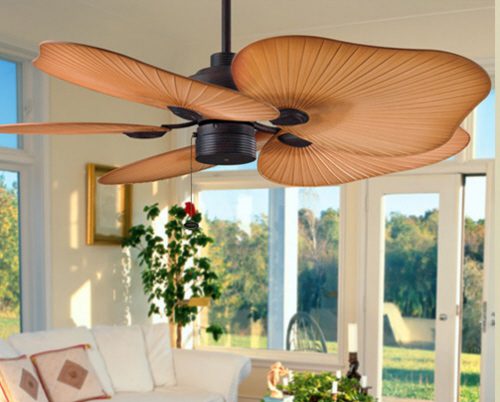
As summer temperatures and utility bills rise, there are some easy ways to keep cool that are cheaper and greener than air conditioning. A little savvy about when to open windows and when to keep them closed with curtains drawn goes a long way toward cooling a home, as does putting thought into what cooling appliances to use and when, the experts say.

Cooling curtains
Pull down the shades or draw the curtains on windows facing south, east and west during the day, according to power company Con Edison. It says 40 percent of unwanted heat comes in through the windows. Even if air conditioning is needed later in the day, drawing the curtains earlier means you can use less of it.

"And it's better to shade the outside of the window than the inside," said Abigail Daken, cooling products manager for Washington, D.C.-based Energy Star, an Environmental Protection Agency program that helps businesses and individuals save money and protect the climate through energy efficiency. "Shutters and awnings are very effective," Daken said.
Get in the flow
When outdoor temperatures fall below 70 degrees, the Natural Resources Defense Council recommends turning off the air conditioner and opening the windows instead.

Open the windows and use the bathroom fan for exhaust, especially if there's no cross breeze, Daken said. "This helps create some flow."
Be a fan of fans
Ceiling fans are a great substitute for air conditioning when it's not overly hot or humid, and they make you feel cooler by moving air across your skin, says Meg Waltner, of the Natural Resources Defense Council.
If you need to buy fans, look for Energy Star ratings and rebate offers, she said.
Also, many ceiling fans feature a light kit, so make sure each socket has an energy-saving LED bulb inside. LED bulbs use five times less energy than the old incandescents and don't give off as much heat, Waltner says.

Plant a tree
Large deciduous trees planted on the east, west and northwest sides of your home create shade from the hot summer sun and can reduce summer air conditioning costs by up to 35 percent, according to the Arbor Day Foundation, a nonprofit Nebraska-based conservation group.

Avoid heat-producing appliances
Con Edison recommends minimizing the use of household appliances when temperatures climb. Summer is a great time to opt for outdoor grilling and foods that don't require cooking. Washers, dryers and dishwashers should be used at night, when temperatures are cooler, the utility says.
When you do use air conditioners . . .
Be sure they're Energy Star-certified, have programmable thermostats, and are set no lower than 78 degrees when you're around, 80 when you're away for part of the day, and "off" when you're on vacation, Waltner says. Programmable thermostats can cut power use by 20 percent to 30 percent, she says. Many power companies offer free programmable thermostats to clients, and it's worth checking their websites for offers and rebates.
"Raising the temperature by 7 degrees when no one is home, 4 degrees at bedtime, along with proper programming during the winter, can save you more than $180 every year," according to Daken .
Make sure windows are well-sealed to keep cool air from leaking out.
Don't cool an empty room: Block vents in unused rooms and turn the system off entirely while you're away.
Keeping central air conditioner filters clean adds to their efficiency. Air conditioners and cooling systems should be inspected and cleaned annually, and kept clear of leaves and dirt, experts say. "We recommend that filters be checked every three months, or more often for homes with pets," Daken said.
If your AC is more than 12 years old, replacing it with an Energy Star-qualified model could cut your annual cooling costs by 30 percent, Waltner says. Many local utility companies offer rebates for more efficient new models.
Source
|